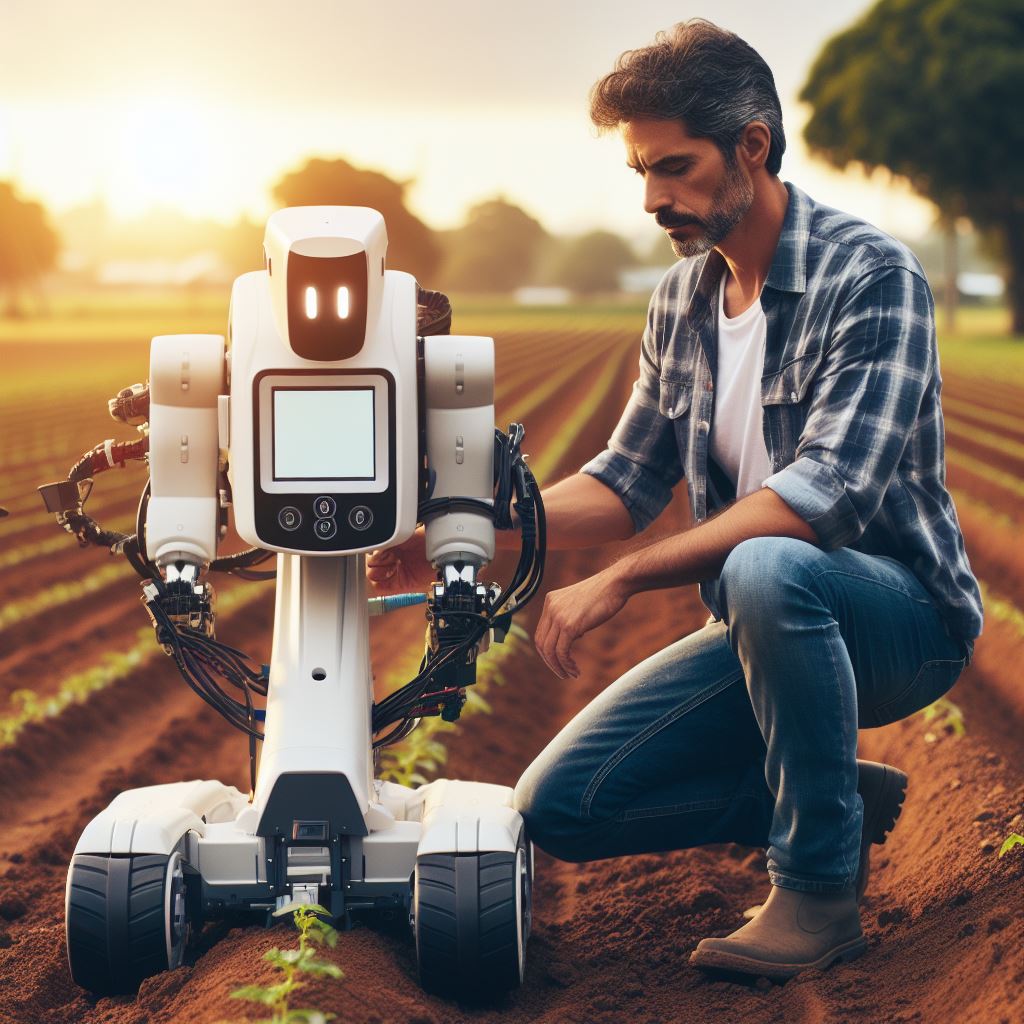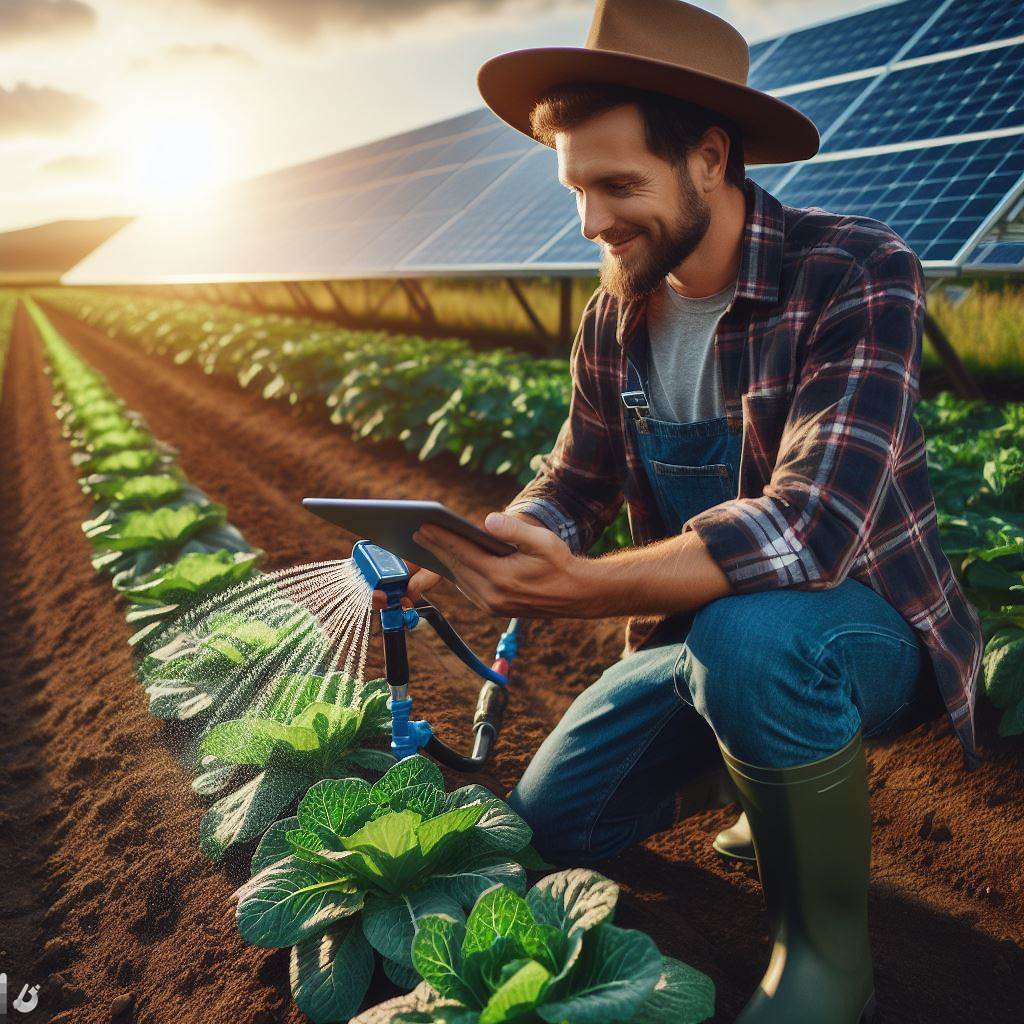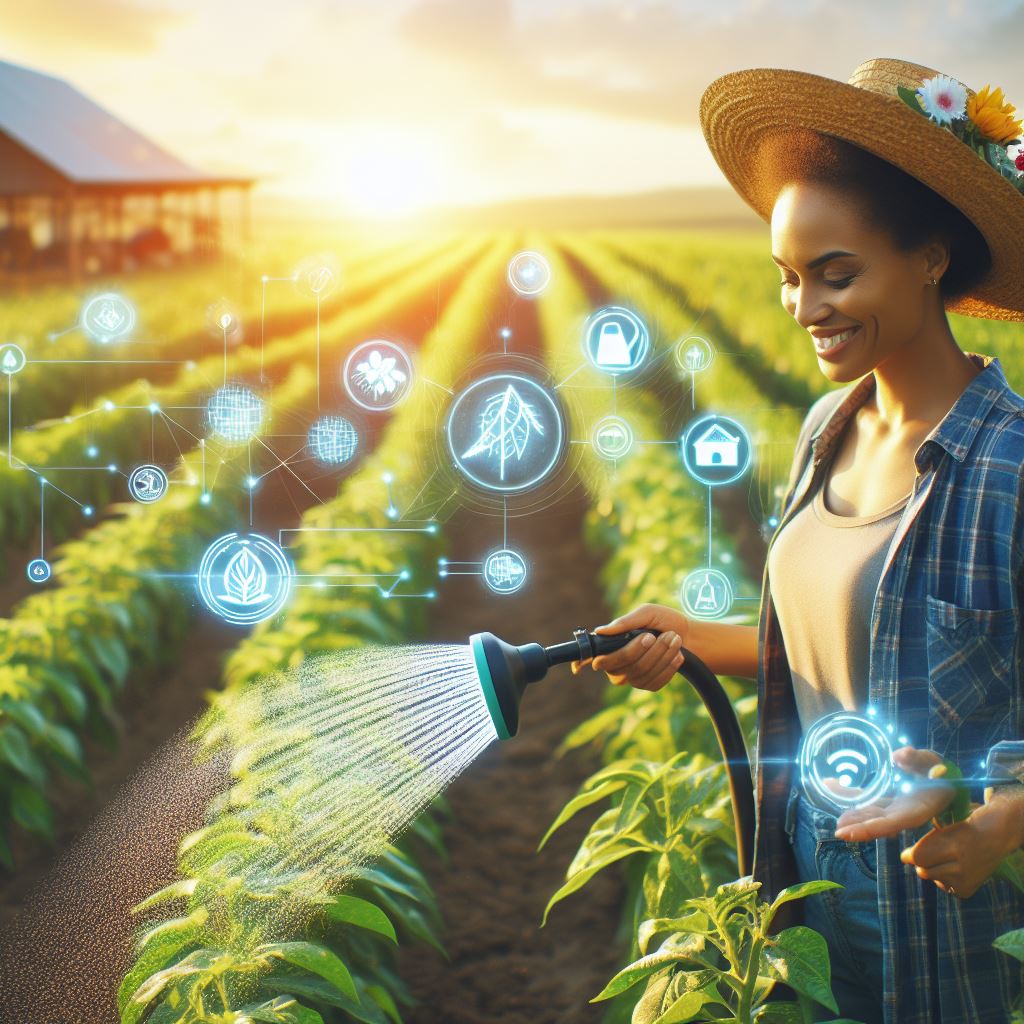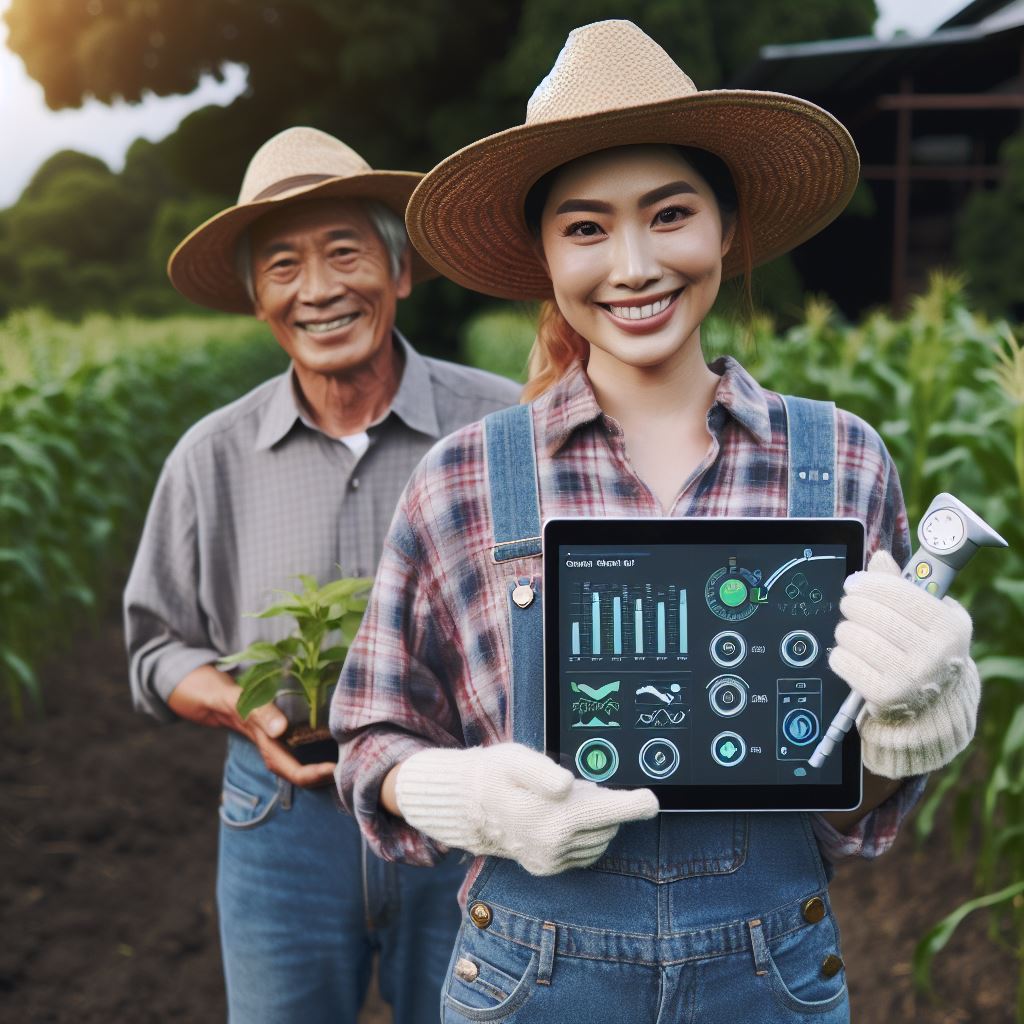Introduction
Brief explanation of drip irrigation
Drip irrigation, also known as micro-irrigation or trickle irrigation, is a technique that delivers water directly to the roots of plants.
It is considered one of the most efficient irrigation methods used in agriculture.
Instead of spraying water over a wide area, drip irrigation uses a network of tubing with tiny holes or emitters to slowly and steadily supply water to plants.
Importance of drip irrigation in agriculture
Drip irrigation is crucial in agriculture for several reasons.
Firstly, it conserves water by minimizing water loss due to evaporation or runoff.
Unlike traditional irrigation systems, which can lose a significant amount of water through evaporation, drip irrigation ensures that most of the water reaches the intended plants.
This water efficiency is especially important in regions facing water scarcity or droughts.
Secondly, drip irrigation helps improve crop yields and quality.
By delivering water directly to the plant’s root zone, it optimizes the absorption of water and nutrients.
Plants receive a consistent and controlled supply, preventing under- or over-watering.
This precision irrigation improves plant growth, reduces weed competition, and minimizes disease and pest problems.
Additionally, drip irrigation enables farmers to target specific areas of their fields, reducing water wastage in non-cropped areas.
It also allows for fertilizers or other agricultural inputs to be directly applied to the root zone, maximizing their efficacy.
Basically, drip irrigation is a game-changer in agriculture.
Its water-saving abilities and precision delivery system make it an ideal choice for farmers worldwide.
Transform Your Agribusiness
Unlock your farm's potential with expert advice tailored to your needs. Get actionable steps that drive real results.
Get StartedAs water resources become scarcer and environmental sustainability takes precedence, the adoption of next-gen drip irrigation systems will undoubtedly continue to revolutionize the agricultural landscape.
Evolution of traditional drip irrigation systems
Overview of traditional drip irrigation systems
Traditional drip irrigation systems have been used for decades as an effective method of delivering water directly to the roots of plants, thus reducing water waste and increasing crop yield.
The concept of drip irrigation dates back to ancient times, with early examples found in ancient China and Egypt, where underground clay pipes were used to deliver water to crops.
Modern drip irrigation systems consist of plastic tubing with small emitters that allow water to drip slowly onto the soil around the plants, minimizing evaporation and maximizing water uptake by the roots.
These systems are widely used in both small-scale and large-scale farming operations around the world, offering significant advantages over conventional flood irrigation methods.
Limitations and challenges faced by farmers
While traditional drip irrigation systems have revolutionized agriculture, they are not without their limitations and challenges for farmers.
One major challenge is the clogging of emitters due to sediment and mineral deposits present in the water, which can reduce water flow and efficiency of the system.
Farmers also face difficulties in uniform water distribution across the entire field, especially in sloping terrains where water tends to accumulate in some areas while leaving others dry.
Another limitation of traditional systems is that they require regular monitoring and management to ensure proper functioning and prevent potential issues such as leaks or breaks in the tubing.
Moreover, the use of traditional drip irrigation systems does not account for variations in soil moisture levels and plant water requirements, leading to either overwatering or underwatering in certain circumstances.
Furthermore, the installation and maintenance costs of traditional systems can be significant, making them less accessible to small-scale farmers with limited budgets.
Read: Smart Sensors: Changing Farm Water Use
Advancements in next-generation drip irrigation technology
Introduction of sensor-based drip irrigation systems
One of the latest advancements in drip irrigation technology is the introduction of sensor-based systems.
These systems utilize various sensors to monitor and control the irrigation process, resulting in improved efficiency and crop yield.
- Benefits of using sensors in drip irrigation: Sensors play a crucial role in modern drip irrigation systems by providing valuable information about soil moisture levels, temperature, and other relevant factors. By utilizing this data, farmers can optimize water and nutrient delivery, leading to healthier plants and reduced wastage.
- Real-time data collection and analysis: Sensor-based drip irrigation systems offer real-time data collection and analysis capabilities. The sensors continuously monitor the soil and crop conditions, providing instant feedback to the farmers. This information enables them to make proactive decisions and adjustments to optimize irrigation cycles.
Automation and smart control systems
In addition to sensor-based systems, next-gen drip irrigation technology incorporates automation and smart control systems.
These advancements further enhance the efficiency and precision of irrigation processes.
- Integration with weather forecasting: Modern drip irrigation systems can be integrated with weather forecasting data.
By utilizing this information, the systems can automatically adjust the irrigation schedules and amounts to account for impending rainfall or other weather events.
This ensures optimal water usage and reduces the risk of over or under irrigating. - Adjustments based on crop needs and weather conditions: Next-gen drip irrigation systems also take into consideration the specific needs of different crops and account for varying weather conditions.
Smart control systems analyze data from sensors and use algorithms to determine the best irrigation parameters for each crop and weather scenario.
This tailored approach optimizes water and nutrient delivery, promoting better growth and yield.
Use of precision farming techniques
Precision farming techniques have revolutionized agriculture, and drip irrigation has not been left behind.
Next-gen drip irrigation systems incorporate precision farming principles to maximize productivity while minimizing resources.
- Variable rate irrigation (VRI) systems: These systems allow farmers to apply water at variable rates across their fields, based on soil type, topography, and other relevant factors.
By precisely tailoring the irrigation rates, farmers can ensure that each part of their field receives the optimal amount of water, eliminating both over and under irrigation. - Precision fertilization and nutrient management: Next-gen drip irrigation systems also integrate precision fertilization and nutrient management techniques.
By precisely delivering fertilizers and nutrients through the drip irrigation system, farmers can ensure that the plants receive the right amount of nutrition at the right time.
This promotes better crop growth and minimizes nutrient runoff, benefiting both the environment and the farmers’ bottom line.
Essentially, advancements in next-generation drip irrigation technology are revolutionizing the way farmers irrigate their crops.
Sensor-based systems, automation and smart control, and precision farming techniques have significantly improved the efficiency, precision, and sustainability of drip irrigation.
By harnessing these innovations, farmers can optimize water and nutrient delivery, resulting in healthier crops and increased yields.
Read: AI in Farming: Precision Ag Revolution
Benefits of next-gen drip irrigation systems
Water conservation and efficiency
Drip irrigation systems are designed to deliver water directly to the root zone of plants, minimizing water loss due to evaporation or runoff.
This targeted approach helps to conserve water and improve irrigation efficiency.
Showcase Your Farming Business
Publish your professional farming services profile on our blog for a one-time fee of $200 and reach a dedicated audience of farmers and agribusiness owners.
Publish Your Profile- Precision watering: Drip irrigation allows for precise control over the amount of water delivered to each plant, ensuring that they receive just the right amount without any wastage.
- Reduced evaporation: By delivering water directly to the soil surface, drip irrigation minimizes evaporation losses, especially in areas with high temperatures or windy conditions.
- Prevention of runoff: Drip irrigation systems apply water slowly and evenly, allowing the soil to absorb it gradually. This helps to prevent runoff and water pooling, which can lead to soil erosion and nutrient leaching.
Increased crop yields and quality
Next-gen drip irrigation systems contribute to improved crop yields and enhanced crop quality by providing optimal conditions for plant growth and development.
- Uniform water distribution: Drip irrigation ensures that each plant receives an equal amount of water, promoting uniform growth and a more consistent crop yield.
- Reduced disease and weed pressure: By delivering water directly to the root zone, drip irrigation minimizes moisture on the leaves and stems, reducing the risk of diseases and weed growth.
- Controlled nutrient delivery: Drip irrigation systems can be combined with fertigation, the simultaneous application of water and fertilizers. This allows for precise control over nutrient uptake, promoting healthier plants and better-quality produce.
Reduction in labor and operational costs
Next-gen drip irrigation systems offer operational efficiencies that result in reduced labor requirements and overall cost savings.
- Automated irrigation: Drip irrigation systems can be easily automated, reducing the need for manual labor to turn on and off the irrigation system. This saves time and labor costs.
- Efficient water management: With precise control over water application, drip irrigation systems reduce the need for constant monitoring and adjustment. This frees up labor resources for other farm tasks.
- Energy savings: Drip irrigation systems require lower water pressure compared to traditional irrigation methods, resulting in energy savings. This can help reduce operational costs in the long run.
Environmental sustainability
Next-gen drip irrigation systems promote environmental sustainability by minimizing water and resource usage, as well as reducing the negative impacts on ecosystems.
- Water resource conservation: Drip irrigation helps to conserve precious water resources by minimizing losses through evaporation and runoff. This is crucial in areas facing water scarcity or drought conditions.
- Reduced chemical runoff: By applying water directly to the root zone, drip irrigation systems can help reduce the leaching of fertilizers and pesticides into groundwater or nearby water bodies, minimizing environmental pollution.
- Ecosystem preservation: With reduced water and chemical usage, next-gen drip irrigation systems contribute to the preservation of natural ecosystems, including rivers, lakes, and wetlands, supporting biodiversity and ecological balance.
In general, next-gen drip irrigation systems offer numerous benefits including water conservation, increased crop yields, reduced labor and operational costs, and environmental sustainability.
By adopting these advanced irrigation techniques, farmers can improve their farming practices and contribute to a more sustainable and productive agriculture industry.
Read: Tech Trends: Agri Robotics in 2024
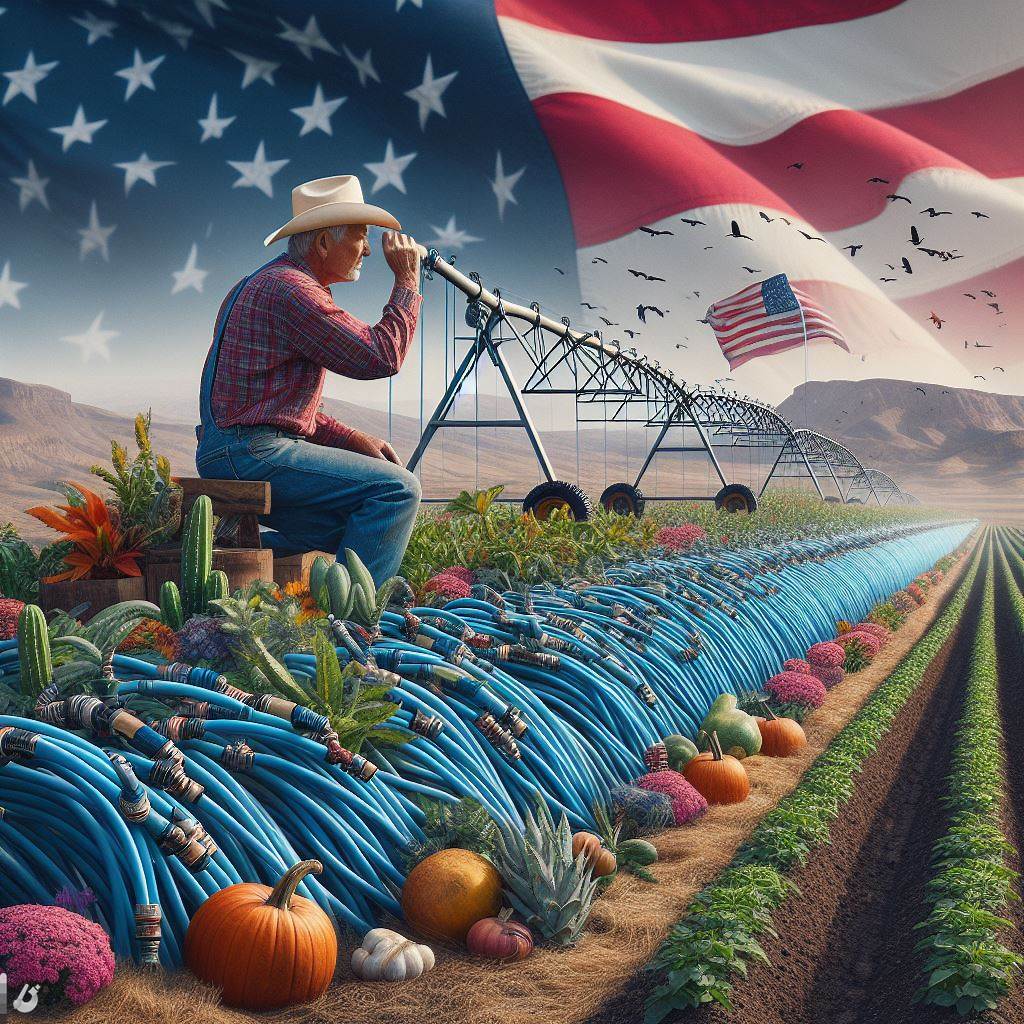
Challenges and Considerations for Adopting Next-Gen Drip Irrigation
Initial investment and cost implications
Next-generation drip irrigation systems may require a higher initial investment compared to traditional systems.
The cost of implementing new technologies and equipment can be a barrier for some farmers.
However, it’s important to consider the long-term benefits and potential cost savings of these advanced systems.
Technical knowledge and training requirements
Next-gen drip irrigation systems often come with complex technology and require specialized knowledge for installation and operation.
Farmers need to invest time and resources in acquiring the necessary technical expertise to successfully implement and manage these systems.
Training programs and support from manufacturers or industry experts can help overcome this challenge by providing farmers with the necessary skills and knowledge.
Compatibility with existing infrastructure
Upgrading to a next-gen drip irrigation system may pose challenges in terms of compatibility with existing infrastructure, such as water sources and distribution networks.
Farmers need to assess the compatibility of these systems with their current setup and make necessary modifications or upgrades.
Additionally, compatibility issues may arise when integrating new technologies with existing monitoring and control systems.
Maintenance and upkeep considerations
Next-gen drip irrigation systems often require regular maintenance and upkeep to ensure optimal performance.
Farmers should be prepared to allocate resources for routine maintenance, including cleaning filters, checking for leaks, and replacing worn-out components.
Adequate training and guidance on maintenance practices are crucial to maximize the lifespan and efficiency of these advanced systems.
In essence, while next-gen drip irrigation offers numerous benefits, farmers need to carefully consider and address the challenges associated with adopting these advanced systems.
The initial investment and cost implications should be evaluated against the potential long-term savings and benefits.
Acquiring the technical knowledge and skills required for installation and operation can be overcome through training programs and industry support.
Assessing the compatibility of new systems with existing infrastructure and ensuring proper maintenance and upkeep are vital for successful implementation.
By addressing these challenges, farmers can leverage the advantages of next-gen drip irrigation and improve their agricultural practices.
Read: Precision Agri: GPS Guided Farming Explained
Discover More: Drones in Farms: Changing the Agri Landscape
Case studies and success stories
Examples of farms implementing next-gen drip irrigation systems
- Smith Family Farm in California upgraded their irrigation system to a next-gen drip system.
- Green Fields Organic Farm in Idaho successfully implemented a next-gen drip irrigation system.
- ABC Farms in Texas invested in advanced technology for their drip irrigation system.
Reported benefits and outcomes
- Increased Crop Yield: Farms using next-gen drip irrigation systems have seen a significant increase in crop production.
- Water Conservation: These systems allow for precise water delivery, minimizing waste and conserving water resources.
- Improved Nutrient Absorption: Next-gen drip systems provide targeted water and nutrient delivery directly to plant roots.
- Enhanced Crop Quality: The consistent and controlled water supply results in higher quality and healthier crops.
- Weed Control: Drip irrigation systems reduce weed growth as water is delivered directly to the plants, not the soil.
- Labor Efficiency: Next-gen drip systems eliminate the need for manual watering, reducing labor and costs.
- Energy Savings: These systems require less energy compared to traditional irrigation methods, lowering electricity costs.
Success Story: Green Fields Organic Farm
Green Fields Organic Farm is a prime example of a successful implementation of a next-gen drip irrigation system.
With their old irrigation system, the farm faced challenges such as uneven water distribution and high water consumption.
After upgrading to a next-gen drip system, the results were impressive.
The farm experienced a 40% increase in crop yield while reducing water usage by 50%.
This significant improvement can be attributed to the precise and efficient water delivery of the system.
Moreover, the farm reported a considerable decrease in weed growth, resulting in reduced labor costs for weed control.
The plants also exhibited improved health and crop quality due to the optimized nutrient absorption facilitated by the technology.
Overall, Green Fields Organic Farm’s success story demonstrates the true potential of next-gen drip irrigation systems in revolutionizing agricultural practices.
By harnessing the power of advanced technology, farmers can achieve higher productivity, conserve water resources, and improve the overall sustainability of their operations.
The role of case studies
Case studies and success stories play a crucial role in showcasing the benefits and potential of next-gen drip irrigation systems.
Through real-world examples, farmers can witness the positive outcomes that can be achieved by adopting these advanced agricultural technologies.
As farmers continue to seek innovative ways to optimize their operations, next-gen drip irrigation systems offer a promising solution.
Farmers report increased crop yield, water conservation, and improved nutrient absorption with next-gen drip irrigation.
Implementing these systems contributes to sustainable agriculture and a more efficient future.
The potential of these systems to revolutionize crop growth and address global challenges is evident.
Showcase Your Farming Business
Publish your professional farming services profile on our blog for a one-time fee of $200 and reach a dedicated audience of farmers and agribusiness owners.
Publish Your ProfileConclusion
Next-gen drip irrigation systems offer numerous advantages for farmers and the agriculture industry.
These innovative systems allow for precise water delivery, minimizing waste and maximizing efficiency.
By delivering water directly to the roots of the plants, drip irrigation reduces water usage and promotes healthier crop growth.
Farmers are encouraged to consider upgrading their irrigation systems to next-gen drip technology.
The initial investment may seem daunting, but the long-term savings and benefits far outweigh the costs.
Improved water and fertilizer efficiency can lead to increased yields, higher quality crops, and reduced environmental impact.
The future prospects of drip irrigation technology are promising.
Ongoing research and advancements continue to improve system design, automation, and monitoring capabilities.
This will further enhance water conservation, precision farming, and crop management practices.
In a nutshell, next-gen drip irrigation systems have revolutionized the way farmers approach irrigation.
With their numerous benefits, upgrading to this technology is a wise investment for a more sustainable and productive agricultural future.

